Double Pumpkin Harvest Technique: Imagine harvesting not one, but two plump, vibrant pumpkins from a single vine! Sounds like a gardener’s dream, right? Well, it doesn’t have to be just a dream. For centuries, gardeners have sought ways to maximize their yields, and while the “double pumpkin harvest technique” might sound modern, the underlying principles of pruning and vine management have roots in ancient agricultural practices. Think of the hanging gardens of Babylon, or the meticulously cultivated terraces of the Incas – maximizing space and yield has always been a priority!
In today’s world, where space is often limited and the desire for fresh, homegrown produce is soaring, mastering this technique is more relevant than ever. I know I’m always looking for ways to get the most out of my garden! This DIY guide will walk you through a simple, yet effective method to potentially double your pumpkin harvest. We’ll cover everything from selecting the right pumpkin variety to the crucial steps of pruning and pollination.
Why do you need this trick? Because who wouldn’t want more pumpkins? Whether you’re planning a festive fall display, dreaming of delicious pumpkin pies, or simply enjoy the satisfaction of a bountiful harvest, learning the double pumpkin harvest technique can significantly increase your yield and make your gardening efforts even more rewarding. Let’s get started and turn your pumpkin patch into a pumpkin paradise!
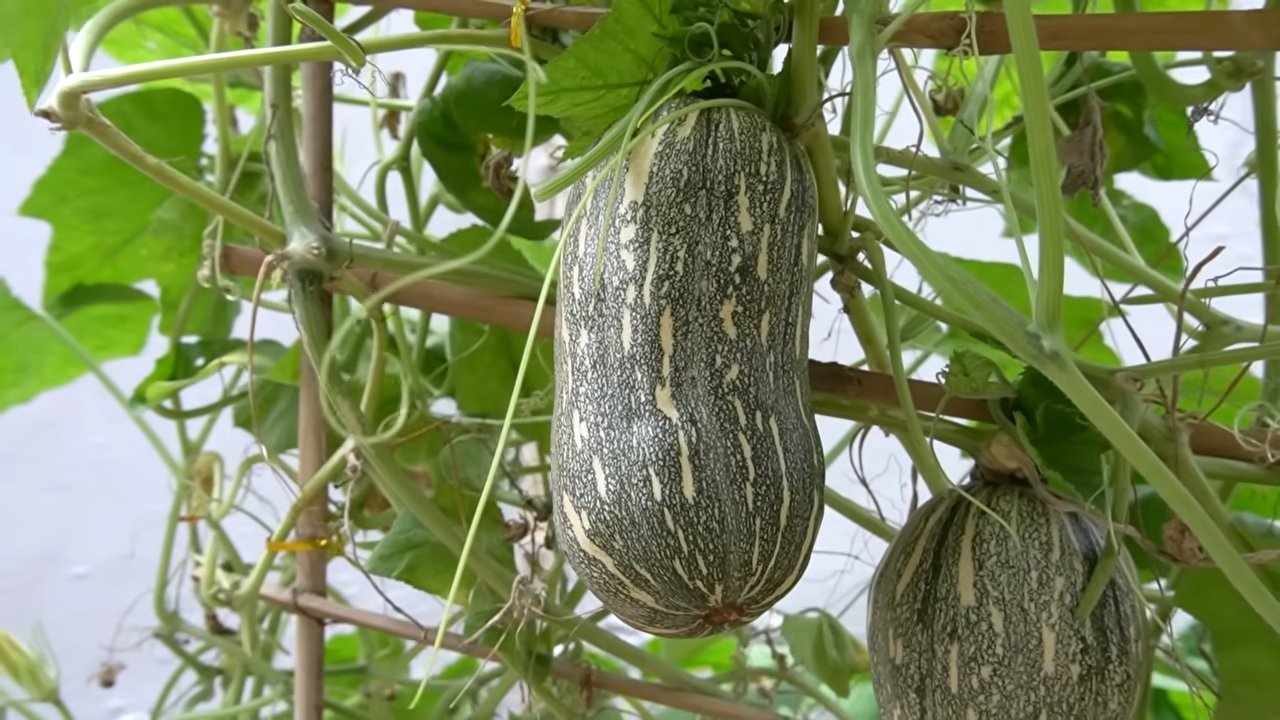
Double Your Pumpkin Harvest: How to Maximize Your Yield!
Hey pumpkin lovers! Have you ever wondered how you can get even more pumpkins from your plants? I have a trick for you that can double (or even triple!) your harvest. It’s called the “Double Pumpkin Harvest” technique. It sounds complicated, but it’s not! Let’s dive in and see how we do it.
What is the “Double Pumpkin Harvest” Technique?
Essentially, it’s all about directing the plant’s energy in a targeted way. Instead of letting the plant grow haphazardly, we focus on promoting the development of the pumpkins already on the plant while simultaneously stimulating new flowers and fruits. The secret lies in pruning and providing the right nutrients.
Why Use This Technique?
- More Pumpkins: The most obvious advantage! You simply harvest more pumpkins per plant.
- Bigger Pumpkins: By focusing the plant’s energy on fewer fruits at a time, they can grow larger and healthier.
- Longer Harvest Season: You can harvest pumpkins over a longer period as the plant continuously produces new fruit.
- Healthier Plants: By pruning, you improve air circulation and reduce the risk of diseases.
What You’ll Need:
- Your pumpkin plants: Vining varieties like Halloween pumpkins, butternut squash, or Hubbard squash are best suited.
- A sharp pair of pruning shears or a knife: Make sure they are clean to prevent the spread of diseases.
- Gardening gloves: To protect your hands.
- Organic fertilizer: A fertilizer high in phosphorus and potassium is ideal for promoting fruit development. I like to use compost tea or bone meal.
- Mulch: To retain moisture in the soil and suppress weeds.
- Patience: The most important thing! It takes time and observation to apply the technique correctly.
Step-by-Step Guide to the “Double Pumpkin Harvest”
Phase 1: Preparation and Observation
- Select your plants: Not all pumpkin plants are the same. Choose healthy, vigorous plants that already have some flowers or small pumpkins. Avoid plants that show signs of disease or pest infestation.
- Observe the growth: Before you start pruning, take some time to observe the growth of your plants. Pay attention to the main vines, the side shoots, the flowers (male and female), and the small pumpkins. Take note of which pumpkins look the most promising.
- Identify the main vines: Pumpkin plants usually have one or more main vines from which side shoots branch off. The main vines are the thickest and longest shoots.
Phase 2: Pruning for More Yield
- Remove unnecessary side shoots: This is key! Cut off all side shoots that do not have flowers or small pumpkins. Focus on directing the plant’s energy to the fruits you want to keep. Cut the side shoots as close as possible to the main vine without damaging it.
- Prune the main vines: Once a main vine is supporting 2-3 pumpkins, you can prune it after the last pumpkin. This forces the plant to put its energy into developing these pumpkins instead of continuing to grow. Leave about 5-6 leaves after the last pumpkin to ensure photosynthesis.
- Remove male flowers (optional): Pumpkin plants produce both male and female flowers. The male flowers are responsible for pollination, but if you already have enough pumpkins, you can remove some of the male flowers to save the plant’s energy. You can recognize male flowers by the fact that they grow on a long, thin stem, while female flowers sit directly at the base of a tiny pumpkin.
- Remove damaged or diseased leaves: Remove any leaves that are yellow, brown, or affected by disease. This improves air circulation and prevents the spread of diseases.
Phase 3: Nutrient Supply and Care
- Fertilize regularly: Pumpkin plants are heavy feeders and need a lot of fertilizer to develop their fruits. Fertilize them every 2-3 weeks with an organic fertilizer high in phosphorus and potassium. Compost tea, bone meal, or a special pumpkin fertilizer are good options.
- Water sufficiently: Pumpkin plants need a lot of water, especially during fruit formation. Water them regularly, especially in dry weather. Avoid watering the leaves, as this increases the risk of fungal diseases. Instead, water directly at the roots.
- Mulch the soil: A layer of mulch around the plants helps to retain moisture in the soil, suppress weeds, and regulate the soil temperature. Straw, wood chips, or compost are good mulching materials.
- Check for pests and diseases: Regularly check your plants for pests like aphids, squash bugs, or powdery mildew. Treat them with organic pesticides or fungicides if necessary.
- Support the pumpkins: If your pumpkins get very large, it may be a good idea to support them with boards or straw bales to prevent them from resting on the ground and rotting.
Phase 4: Pollination (if necessary)
- Hand pollination: Sometimes, pollination may not work optimally, especially in bad weather or if there are not enough bees. In this case, you can hand-pollinate the flowers. To do this, take a small brush and transfer the pollen from a male flower to the stigma of a female flower. The best time for hand pollination is early in the morning.
Phase 5: Harvest
- Harvest time: The timing of the harvest depends on the pumpkin variety. In general, pumpkins are ripe when their rind is hard and can no longer be easily indented with a fingernail. The stem should also be dry and woody.
- Harvest carefully: Cut the pumpkin from the stem with sharp pruning shears or a knife. Leave about 5-10 cm of stem on the pumpkin to extend its shelf life.
- Store the pumpkins correctly: Store the pumpkins in a cool, dry, and well-ventilated place. Avoid stacking them, as this can cause pressure spots and rot.
Additional Tips for a Successful “Double Pumpkin Harvest”
Experiment: Every plant is different. Experiment with different pruning techniques and fertilizers to find out what works best for your plants.
Choose the right variety: Some pumpkin varieties are better suited for this technique than others. Vining varieties like Halloween pumpkins, butternut squash, or Hubbard squash are ideal.
Start early: Begin pruning and fertilizing as soon as the plants are well-established and have some flowers or small pumpkins.
Be patient: It takes time and observation to apply the technique correctly. Don’t give up if you don’t see results immediately.
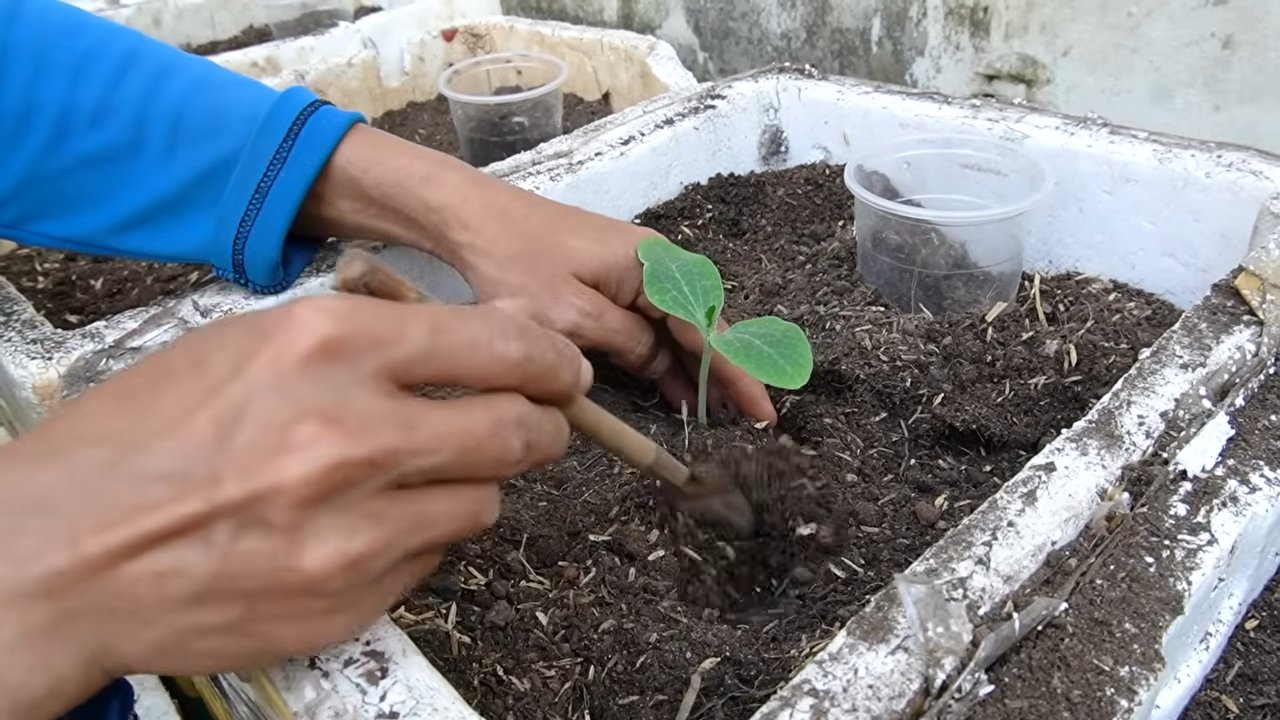
Conclusion
So, there you have it – the Double Pumpkin Harvest Technique, a game-changer for any pumpkin enthusiast looking to maximize their yield and enjoy a truly bountiful autumn. This isn’t just about getting more pumpkins; it’s about optimizing your garden space, nurturing healthier vines, and ultimately, experiencing the satisfaction of a truly successful harvest.
Why is this a must-try? Because it addresses the common challenges faced by pumpkin growers: limited space, the risk of vine rot, and the desire for larger, more impressive pumpkins. By strategically pruning and focusing the plant’s energy, you’re essentially giving your pumpkins a VIP pass to growth and development. You’re not just hoping for a good harvest; you’re actively engineering one.
But the beauty of this technique lies in its adaptability. Feel free to experiment! For smaller pumpkin varieties like pie pumpkins or Jack Be Littles, you might find that leaving even more secondary vines can still result in a fantastic harvest. If you’re growing giant pumpkins, meticulous pruning and vine management are even more critical. Consider using soil moisture meters to ensure consistent hydration, and don’t hesitate to provide supplemental feeding with a balanced fertilizer specifically formulated for fruiting vegetables.
Another variation to consider is the timing of your pruning. In warmer climates with longer growing seasons, you might be able to start pruning earlier in the season. Conversely, in cooler climates, you might need to delay pruning to allow the plant to establish itself fully. Observe your plants closely and adjust your approach accordingly.
Don’t be afraid to get your hands dirty and embrace the learning process. Gardening is, after all, a journey of discovery. The Double Pumpkin Harvest Technique is a powerful tool, but it’s just one piece of the puzzle. Pay attention to your soil health, provide adequate sunlight and water, and protect your plants from pests and diseases.
We wholeheartedly encourage you to try this technique in your own garden. Whether you’re a seasoned pumpkin grower or a complete beginner, we believe you’ll be amazed by the results. Imagine the satisfaction of harvesting not just one, but two (or even more!) beautiful, healthy pumpkins from a single vine. Think of the pies you can bake, the jack-o’-lanterns you can carve, and the memories you can create.
But most importantly, we want to hear about your experience! Share your photos, tips, and challenges in the comments below. Let’s build a community of pumpkin enthusiasts who are passionate about maximizing their harvests and sharing their knowledge with others. Did you find that a particular pruning method worked best for you? Did you encounter any unexpected challenges? Your insights could be invaluable to other gardeners.
So, grab your pruning shears, head out to your garden, and get ready to unlock the full potential of your pumpkin vines. The Double Pumpkin Harvest Technique is waiting to transform your harvest, and we can’t wait to see what you create! Happy growing!
FAQ
What exactly is the Double Pumpkin Harvest Technique?
The Double Pumpkin Harvest Technique is a method of pruning pumpkin vines to encourage the plant to focus its energy on producing a smaller number of larger, healthier pumpkins. It involves selectively removing secondary vines and blossoms to direct nutrients and resources towards the primary fruit, ultimately leading to a more abundant and higher-quality harvest. The goal is to get two pumpkins from one vine.
When is the best time to start pruning my pumpkin vines?
The ideal time to begin pruning depends on your climate and the specific variety of pumpkin you’re growing. Generally, you should start pruning once the plant has established a strong central vine and has begun to produce secondary vines. This typically occurs a few weeks after planting. In warmer climates, you can start pruning earlier, while in cooler climates, it’s best to wait until the plant is well-established. Look for the first signs of female flowers (those with a small pumpkin already forming at the base) as a good indicator that it’s time to start pruning.
How do I identify the primary vine and secondary vines?
The primary vine is the main stem that grows directly from the base of the plant. It’s usually the thickest and longest vine. Secondary vines are smaller vines that branch off from the primary vine. They tend to be thinner and less vigorous than the primary vine. When pruning, you’ll want to focus on removing or shortening these secondary vines.
Which vines should I prune, and how much should I remove?
The goal is to limit the number of pumpkins developing on each vine. For the Double Pumpkin Harvest Technique, you want to allow only two pumpkins to fully develop per vine. Once you have identified two promising female flowers (those with small pumpkins already forming), prune off all other female flowers and any new secondary vines that emerge. You can also trim back the ends of the secondary vines to encourage the plant to focus its energy on the existing pumpkins.
What tools do I need for pruning pumpkin vines?
You’ll need a sharp pair of pruning shears or a knife. Make sure your tools are clean and sanitized to prevent the spread of disease. A pair of gardening gloves is also recommended to protect your hands from thorns and sap.
Will pruning hurt my pumpkin plants?
When done correctly, pruning is beneficial for pumpkin plants. It helps to direct the plant’s energy towards producing larger, healthier pumpkins. However, it’s important to avoid over-pruning, which can stress the plant and reduce its overall yield. Always use sharp, clean tools to make clean cuts, and avoid pruning during periods of extreme heat or drought.
What if I accidentally prune off a promising female flower?
Don’t worry! It happens. Simply allow another female flower to develop on the vine. The plant will continue to produce new flowers throughout the growing season. Just remember to prune off any additional flowers once you have your desired number of pumpkins.
How often should I water my pumpkin plants after pruning?
After pruning, it’s important to maintain consistent watering to help the plant recover and focus its energy on the remaining pumpkins. Water deeply and regularly, especially during dry periods. Avoid overhead watering, which can promote fungal diseases. Consider using a soaker hose or drip irrigation to deliver water directly to the roots.
Do I need to fertilize my pumpkin plants after pruning?
Yes, fertilizing can help to support the growth of the remaining pumpkins. Use a balanced fertilizer specifically formulated for fruiting vegetables. Follow the instructions on the fertilizer package carefully, and avoid over-fertilizing, which can damage the plants. A side dressing of compost or well-rotted manure can also provide essential nutrients.
What are some common pests and diseases that affect pumpkin plants?
Common pests include squash bugs, squash vine borers, and aphids. Common diseases include powdery mildew, downy mildew, and blossom end rot. Regularly inspect your plants for signs of pests or diseases, and take appropriate action to control them. Organic pest control methods, such as insecticidal soap and neem oil, can be effective for managing many pests. Good air circulation and proper watering practices can help to prevent fungal diseases.
Can I use this technique for other types of squash?
Yes, the Double Pumpkin Harvest Technique can be adapted for other types of squash, such as butternut squash, acorn squash, and spaghetti squash. However, the specific pruning methods may vary depending on the variety of squash. Research the specific needs of your chosen squash variety to determine the best pruning strategy.
What if my pumpkins don’t get very big, even after pruning?
Several factors can affect the size of your pumpkins, including soil quality, sunlight, water, and nutrient availability. Make sure your plants are getting at least six hours of direct sunlight per day, and that the soil is well-drained and rich in organic matter. Provide consistent watering and fertilize regularly. If you’re still having trouble, consider getting your soil tested to identify any nutrient deficiencies.
How long does it take for a pumpkin to mature after the flower is pollinated?
It typically takes between 90 and 120 days for a pumpkin to mature after the flower is pollinated, depending on the variety. The pumpkin will gradually change color from green to orange as it ripens. You can also check for ripeness by tapping on the pumpkin. A ripe pumpkin will sound hollow.
What should I do with the pruned vines and leaves?
You can compost the pruned vines and leaves, provided they are free from disease. Alternatively, you can chop them up and use them as mulch around your pumpkin plants. This will help to retain moisture in the soil and suppress weeds.
Is the Double Pumpkin Harvest Technique suitable for all pumpkin varieties?
While the technique can be applied to most pumpkin varieties, it’s particularly beneficial for larger varieties where maximizing size and quality is desired. Smaller varieties might not require such aggressive pruning, but the principles of directing plant energy still apply.


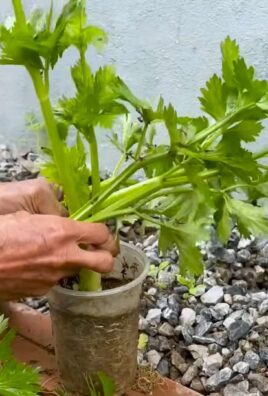
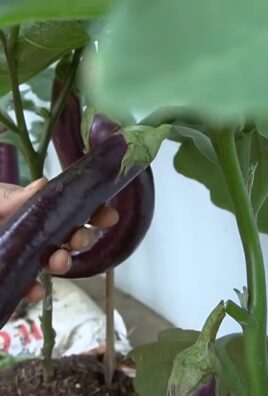
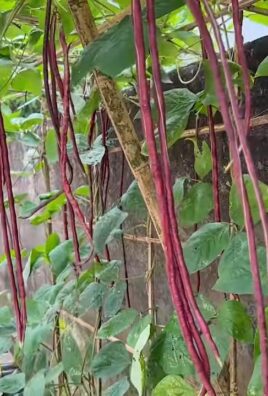
Leave a Comment